|
|
Post by pjotr on Jul 29, 2016 12:09:39 GMT 1
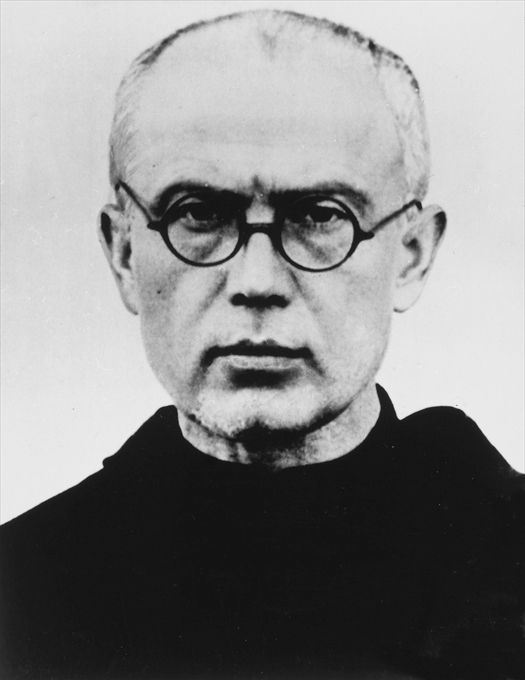
Maximilian Maria Kolbe, O.F.M. Conv. (Polish: Maksymilian Maria Kolbe [maksɨˌmʲilʲjan ˌmarʲja ˈkɔlbɛ]; 8 January 1894 – 14 August 1941) was a Polish Conventual Franciscan friar, who volunteered to die in place of a stranger in the German death camp of Auschwitz, located in German-occupied Poland during World War II. He was active in promoting the veneration of the Immaculate Virgin Mary, founding and supervising the monastery of Niepokalanów near Warsaw, operating a radio station, and founding or running several other organizations and publications. Kolbe was canonized on 10 October 1982 by Pope John Paul II, and declared a martyr of charity. He is the patron saint of drug addicts, political prisoners, families, journalists, prisoners, and the pro-life movement. John Paul II declared him " The Patron Saint of Our Difficult Century". Due to Kolbe's efforts to promote consecration and entrustment to Mary, he is known as the Apostle of Consecration to Mary. |
|
|
|
Post by Bonobo on Jul 29, 2016 15:24:09 GMT 1
Good you started this thread, there is none about Kolbe. Maximilian Maria Kolbe, O.F.M. Conv. (Polish: Maksymilian Maria Kolbe [maksɨˌmʲilʲjan ˌmarʲja ˈkɔlbɛ]; 8 January 1894 – 14 August 1941) was a Polish Conventual Franciscan friar, who volunteered to die in place of a stranger in the German death camp of Auschwitz, located in German-occupied Poland during World War II. He was active in promoting the veneration of the Immaculate Virgin Mary, founding and supervising the monastery of Niepokalanów near Warsaw, operating a radio station, and founding or running several other organizations and publications.
Kolbe was canonized on 10 October 1982 by Pope John Paul II, and declared a martyr of charity. He is the patron saint of drug addicts, political prisoners, families, journalists, prisoners, and the pro-life movement.[2] John Paul II declared him "The Patron Saint of Our Difficult Century".[3]
Due to Kolbe's efforts to promote consecration and entrustment to Mary, he is known as the Apostle of Consecration to Mary.[4][...] en.wikipedia.org/wiki/Maximilian_Kolbe  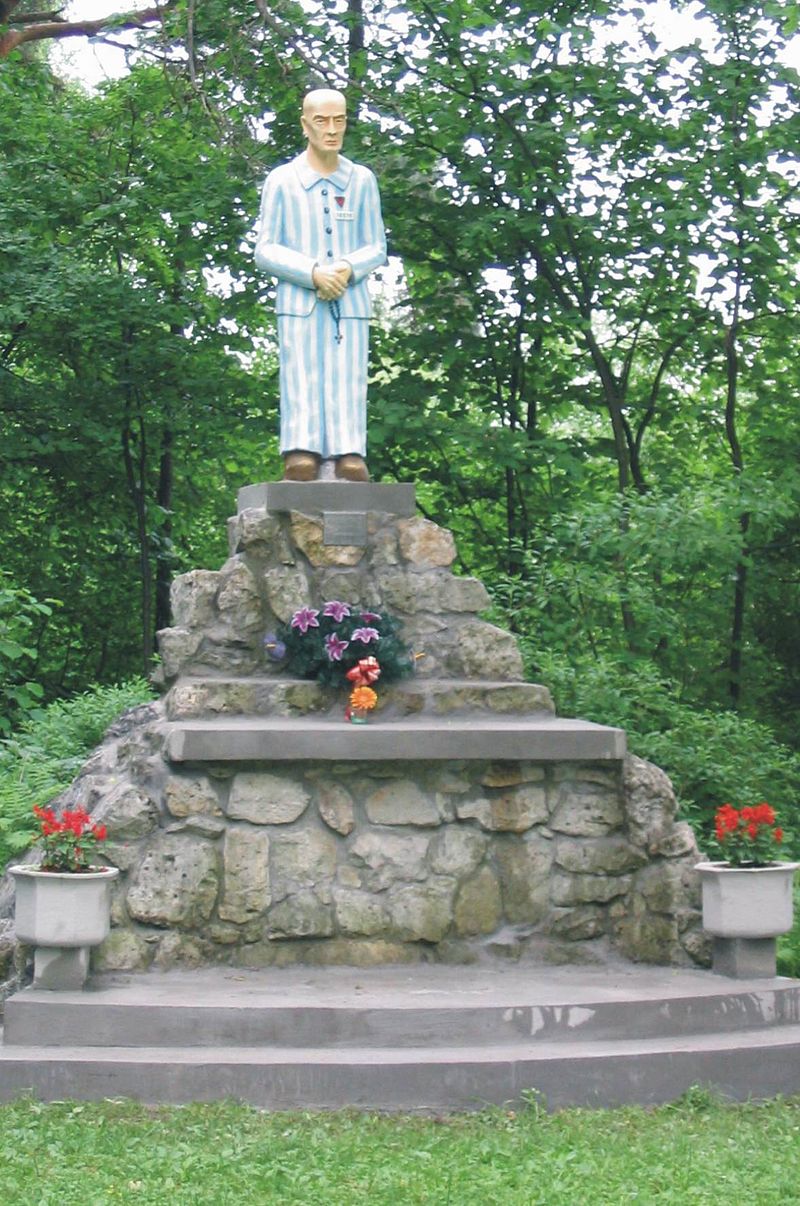  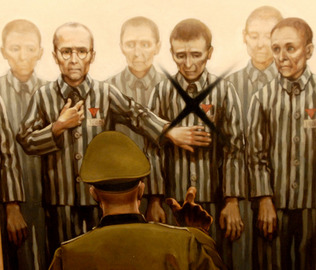   |
|
|
|
Post by Bonobo on Jul 29, 2016 15:37:48 GMT 1
en.wikipedia.org/wiki/Franciszek_GajowniczekThis is the man whom Kolbe saved in death camp. He lived for 50 years after WW2.
Franciszek Gajowniczek (November 15, 1901 – March 13, 1995)[2][3] was a Polish army sergeant whose life was saved by priest St. Maximilian Kolbe, who volunteered to die in his place.[2] Gajowniczek had been sent to Auschwitz concentration camp from Gestapo prison in Tarnów. He was captured while crossing the border with Slovakia after the defeat of the Modlin Fortress during the 1939 German invasion of Poland. Gajowniczek and Kolbe met as inmates of Auschwitz in May 1941.[2]
Life
Franciszek Gajowniczek, a Roman Catholic,[2] was born in Strachomin near Mińsk Mazowiecki.[2] He lived in Warsaw since 1921, and had a wife and two sons. He was a professional soldier who took part in the defence of Wieluń as well as Warsaw in September 1939. He was captured by the Gestapo in Zakopane. He arrived at Auschwitz on September 8, 1940. When a prisoner appeared to have escaped,[3] Sub-Commandant Karl Fritzsch ordered that ten other prisoners die by starvation in reprisal. Franciszek Gajowniczek (prisoner number 5659) was one of those selected at roll-call. When the Franciscan priest, Kolbe, heard Gajowniczek cry out in agony over the fate of his family, he offered himself instead (for which he was later canonized).[2] Kolbe's exact words have been forgotten, but one version records his words as, "I am a Catholic priest from Poland; I would like to take his place, because he has a wife and children."[4] The switch was permitted; after all his cellmates died, Kolbe (prisoner 16670) was put to death with an injection of carbolic acid.[3]
Gajowniczek was sent from Auschwitz to Sachsenhausen concentration camp on October 25, 1944.[2] He was liberated there by the Allies, after spending five years, five months, and nine days in German concentration camps in total. He reunited with his wife, Helena, half-a-year later in Rawa Mazowiecka. Though she survived the war, his sons were killed in a Soviet bombardment of German occupied Poland in 1945, before his release.[3] .jpg) 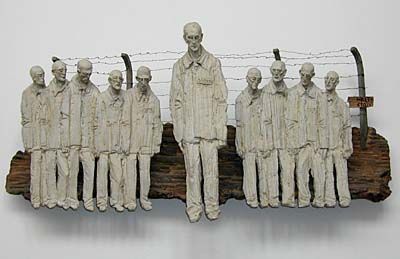 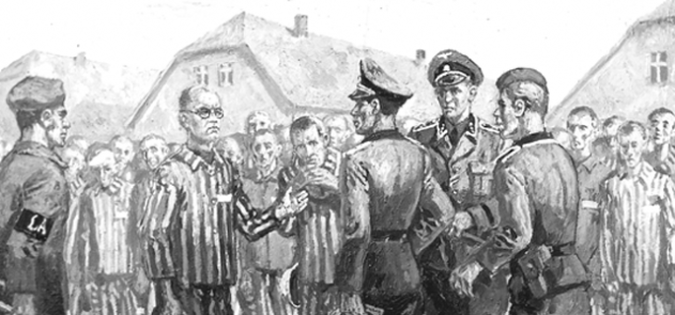 
|
|

















.jpg)


